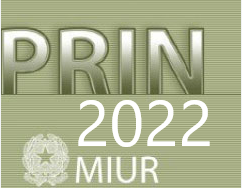PageContent

PRIN Bando 2022

+ Imaging calorimetry in scintillating media for high energy physics and tomography (PRIN_2022KJZSYB) This research project explores the use of scintillation light imaging to detect ionizing particle interactions, primarily in cryogenic noble liquid scintillators. The formation of an image on a sensor matrix (built with Silicon Photomultipliers) through a coded aperture mask allows to reconstruct the event topology and the deposited energy. This technique is proposed as an alternative or a complement to the traditional charge based readout of LAr and LXe TPCs, bringing the advantage of a higher rate capability. Its potential applications to other scintillators, to be used in the construction of calorimeters or medical imaging devices will also be explored. +Development of innovative scintillation detector for future particle colliders and medical imaging (PRIN_2022MHC2MH) Since the discovery of X-rays at the end of the 19th century, the continuous technology transfer from High-Energy Physics (HEP) to medical imaging represents one of the most successful examples of how fundamental research impacts our society. Seeking answers to the fundamental questions about the smallest constituents of the universe and the rules governing their interaction, HEP researchers developed technological innovations that improved dramatically also our capabilities to study the human body. This project aims at developing technological solutions to be adopted for calorimeters operating at the next generation of HEP experiments. Radiation tolerance, granularity, capability to operate at extreme rates, and spatial and timing resolution, well beyond the limit of current detectors, will be mandatory to cope with the conditions imposed by future accelerators. Improvements to all the components of modern calorimeters will be studied, with particular attention to new scintillating crystals with optimised properties, very fast photomultiplier and dedicated readout electronics. Building on top of the gained experience the project will investigate the possibility to use the developed technologies for time-of-flight measurements in PET devices for medical imaging. +New physics, fundamental engineering and technological challenges in the emerging era of neutrino detectors at the Large Hadron Collider: feasibility study in view of an upgrade of the SND@LHC experiment for the high-luminosity LHC (PRIN_2022E4JFWF) A new branch of neutrino physics has started in 2022. For the first time, pioneer experiments, like SND@LHC, were built at CERN to detect neutrinos produced at the LHC, in a hitherto unexplored angular region and in a very high energy domain where the cross-sections remain totally unexplored, in particular for tau neutrinos where new physics may be unveiled. First observations have recently been published. An advanced version of SND@LHC (called AdvSND) will have to be designed to extend the physics program in the LHC high luminosity phase (HL-LHC), scheduled to start in 2029. Three key points need to be investigated as a prelude to a design, and are the subject of this PRIN. Work Package 1 ( INFN Bologna leading) is dedicated to searching the LHC tunnel for a location to install a second apparatus for measuring neutrinos in an angular region that partially overlaps with the LHCb experiment. This possibility will reduce the systematic uncertainties of the AdvSND measurements, and maximize the statistical accuracy reachable at HL-LHC. The underground location will have to show sustainable machine-induced backgrounds. In Work Package 2 (University Parthenope of Naples leading), a state-of-the-art magnet is studied for placement downstream of the AdvSND setup, so to enable distinguishing between neutrinos and anti-neutrinos interactions. Work Package 3 (University Federico II of Naples leading) consists in identifying new detector technologies to profit from the HL-LHC. In particular, a new vertex detector has to be designed for AdvSND using silicon detectors or other real time devices, since the emulsion technology of SND@LHC cannot operate in the HL-LHC environment. +Beyond Liquid Argon (BeLAr): a Xenon Doped LArTPC forNeutrinoless Double Beta Decay Searches (PRIN_2022STFALX) The aim of BeLAr is to transform the DUNE experiment into the most sensitive neutrinoless double beta decay (0νββ) observatory in the world. This can be achieved by capitalizing on two major experimental results: the capability of building a LArTPC with a significant amount of Xe-136 as part of the WLS compound; and the direct detection of xenon scintillation light. We want to prove such a bold statement by building a small-scale xenon doped LArTPC at CERN to demonstrate the effectiveness of xenon doping and by performing a data-driven assessment of background mitigation +A fast lens based imaging device for liquid argon detectors for neutrino, particle, and medical physics applications (PRIN_2022M7RRKK) The project aims to demonstrate the feasibility of obtaining temporal and spatial information of particle interactions in liquid argon detectors, using devices that produce stereoscopic images of the ultraviolet light copiously emitted by liquid argon. The key idea is to use a lens system coupled to a high-granularity photon detector, a novel approach in particle physics. The project plans to build prototypes that address the technological challenges and test them with cosmic rays. If the project succeeds, it will offer a faster, simpler and cheaper alternative to the current methods, based on time projection chambers, and will have an impact on neutrino physics, dark matter, and beta decay. The project also has potential applications in biomedical devices, such as a new PET machine for tumor detection for a full-body detector with a low dose for patient. +Towards the ultimate Dark Matter experiment: improved electrodes and neutron veto technologies for the next-generation xenon TPC for the direct detection of dark matter (PRIN_2022YYX3WJ) The project lays in the field of direct dark matter search, where the current best results come from the XENON esperiment at the INFN Gran Sasso Underground Laboratory. Neutrons represent one of the most important background in this search: one way to mitigate their impact is by using an active veto all around the xenon target made of a Gd-doped water Cherenkov detector. The project aims at improving the performances of this kind of veto, increasing the Gd concentration, the transparency of the solution, and the salt recovery at the end of the operations, in view of the next phase of the XENON experiment, named DARWIN.















